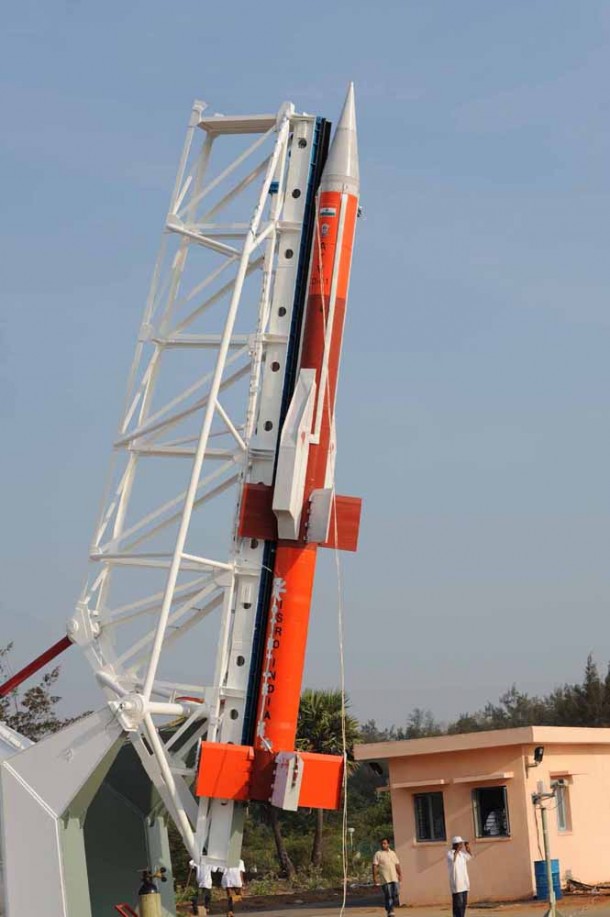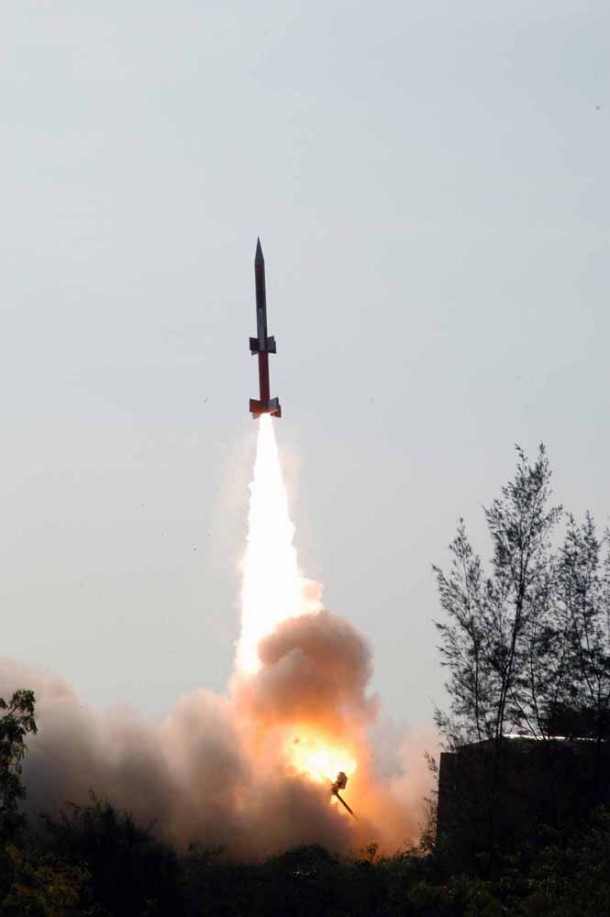http://www.hindu.com/seta/2006/01/19/stories/2006011900151500.htm
Towards air-breathing rockets
THE INDIAN Space Research Organisation (ISRO) added another feather to its cap when it successfully tested the use of oxygen moving at a speed of Mach 6 — six times the speed of sound — in laboratory conditions to produce a stable supersonic combustion lasting for a few seconds.
Put in a nutshell, the organisation has tested the scramjet (supersonic combustion ramjet) technology that uses air moving at supersonic speed (Mach 6) for ignition. The speed of sound is 750 km per second and is called Mach 1. Anything beyond Mach 1 is considered supersonic. Ramjets, on the other hand, use air at subsonic speed (below Mach 1) for ignition.
Joining the elite club
With this, India has joined the elite club comprising a handful of nations that are working on mastering the technology. The U.S., Japan, China, Russia, Australia, and some countries in Europe, according to an ISRO press release, are working on scramjet technology. But none, except the U.S., has tested it in an experimental flight.
Using oxygen present in the atmosphere to burn the fuel is nothing new — all fighter planes with turbojet engines use this technology. The fuel carried by these engines is ignited by air compressed using fans. The expanding gases after compression are directed towards the rear to propel the planes forward.
Conventionally, rockets carry oxygen and fuel and do not depend on oxygen present in the atmosphere to burn the fuel. That is because rockets, unlike fighter planes fitted with turbojets, move at a very high speed, and using oxygen at such high speeds is a challenging task; fighter planes with turbojet engines attain speeds in the range of Mach 2-2.5.
Stable combustion
"Our achievement is not just reaching Mach 6 but being able to produce stable combustion at such a high velocity for a few seconds," said B.N. Suresh, Director of the Thiruvananthapuram based Vikram Sarabhai Space Centre (VSSC). "It's like lighting a matchstick in a hurricane condition."
To be more precise, the achievement is not just lighting a matchstick in a hurricane condition but also sustaining the flame for the entire duration of operation.
ISRO's achievement was in a laboratory environment. The air velocity was simulated to reach Mach 6 at entry conditions and combustion produced by supplying hydrogen fuel. It next plans to test the technology in a sounding rocket by mid 2007.
Greater thrust achieved
Using air breathing scramjet technology has many advantages. "Rockets using liquid fuel will have a specific impulse of 300 seconds (thrust generated by burning 1 kg of propellant in 1 second) and cryogenic fuel will have 440-450 seconds compared with 2500-3000 seconds with scramjet," Dr. Suresh explained.
"So compared with cryogenic, scramjet propulsion has significant advantage in enhancing the payload capability with cost advantage."
Greater the thrust, the lesser the propellant that needs to be carried. Scramjet powered rocket utilising oxygen available in the atmosphere can thus reduce the amount of oxygen to be carried on board considerably.
Oxygen accounts for nearly 60 per cent of the propellant's weight in a rocket. Rockets would thus become lighter and smaller or can carry more payload.
Dr. Suresh does not wish to commit himself at this stage regarding the quantum of weight reduction that can be achieved. "There will be weight reduction. But how much would depend on the configuration and systems that would be used," he said.
Cost advantage
There is a definite cost advantage when using the air breathing scramjet technology. "The cost reduction will be substantial," is all Dr. Suresh likes to say at this stage.
For all its advantages, air-breathing rockets have to still use conventional fuels to reach an acceleration of Mach 6 before scramjet technology can take over.
Oxygen availability
Another issue is the availability of oxygen. Oxygen is limited to the atmosphere and is dense in the 10-20 km region. "It is best to use [scramjet] optimally at this height," Dr. Suresh underlined.
One would be crossing the denser region of the atmosphere beyond 40-45 km. As a rule, thinning of oxygen is seen as we go higher up the atmosphere.
Oxygen availability in the atmosphere will per force require some changes in the trajectory of the launch vehicle.
Change in trajectory
While a nearly vertical trajectory followed by rockets is possible when oxygen is carried on board, the use of scramjet will necessitate a more horizontal trajectory.
"The trajectories have to be redesigned to allow the launch vehicles [rockets] to be in the atmosphere for longer periods," Dr. Suresh explained.
Longer trajectories in the atmosphere have their own share of problems. "About 2200-2800 Kelvin temperature will be produced [when the rocket is in the atmosphere at higher velocities for longer periods].
"So thermal problems would arise and we need to find solutions for these [problems]," he noted. "We are mastering the technology [to overcome these problems]."
Using scramjet technology becomes all the more important as ISRO has set its eyes on re-launch vehicles (rockets that can be reused). "We are ultimately looking at re-launch vehicles [where we can use this technology]," he noted.
So when does ISRO plan to use scramjet technology in launch vehicles? Dr. Suresh is unwilling to specify a target date. "Let us go step by step," he said, "It is not wise to specify any date now." Sources at ISRO, however, say that it would take 7-10 years before it could ever be used in launch vehicles.





